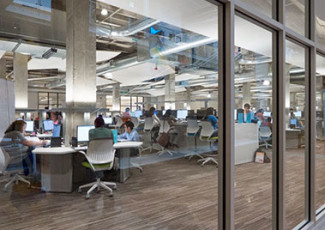Increasing Your College’s Agility
By Emily Rogan
November 9, 2015
The president at one community college in Oregon seeks to build institutional capacity in order to be flexible and effective.
As community college leaders assess their institutions’ ability to adapt to change, a new language is evolving. It’s centered on the idea of institutional agility. For example, how can schools become more flexible and effective in the face of accelerating change?
Just as athletes need to be agile — able to shift and respond to new and unexpected situations — so, too, do community colleges. The reform movement and focus on student success requires swift and large-scale transformation. Some leaders might feel overwhelmed, but Mary Spilde, president of Lane Community College (LCC), in Eugene, Oregon, has embraced the idea that leaders and their teams can become more agile, allowing them to handle present needs and future challenges effectively.
“There’s a call for community colleges to transform themselves, to re-engineer around student success,” Spilde says. “Do we have the internal capacity to make the changes necessary to keep community colleges aligned with the 21st century?”
Spilde says the concept of agility isn’t completely new, but it is now necessary in order for community colleges to thrive. Together with other administrators, she worked with Harvard’s School of Public Health in a workshop focused on leadership and sustainability. What emerged from that work was a larger conversation about a model for change.
Change: Combining old and new models
Spilde describes the traditional hierarchy that exists in most community colleges as the “command and control structure.” She says it needs to stay in place to help when barriers arise and systemic problems prevent progress.
However, alongside that structure, Spilde says there needs to be an “adaptive operating system,” which is more organic and fluid. “What we’re saying is that top-down efforts for change are not agile enough for the fast-changing needs of the 21st century.”
But what does this new model look like? At LCC, a primary focus has been professional development for staff and faculty members. “The approach we take is to build institutional capacity. We’re not there yet; it’s very much a journey for us,” Spilde says.
LCC has invited speakers to inform faculty on national dialogues and has created a dialogue within the college. “We plant seeds and bring the knowledge to share broadly across the institution,” Spilde says. “It’s empowering and supporting stakeholders to come up with innovation and implementation.”
“This is not a quick fix,” Spilde adds, “it’s a long-term strategy.”







